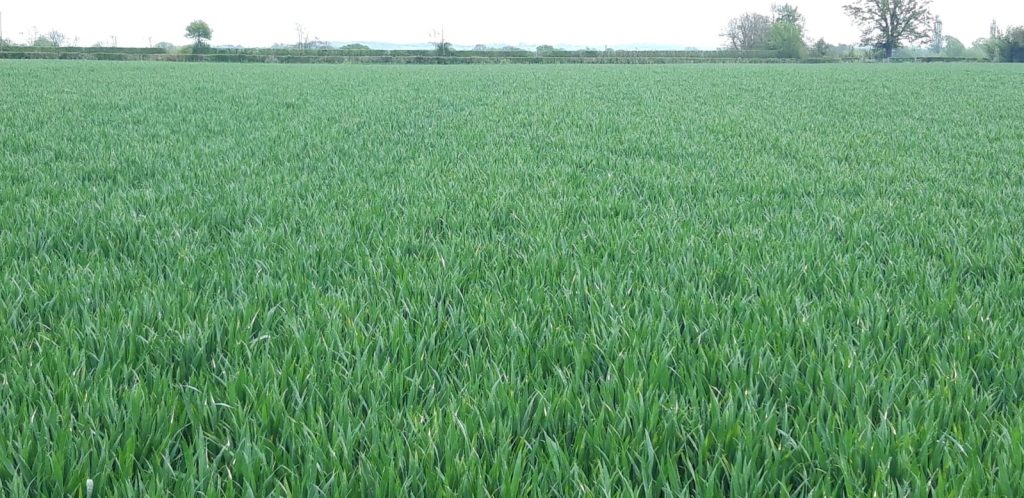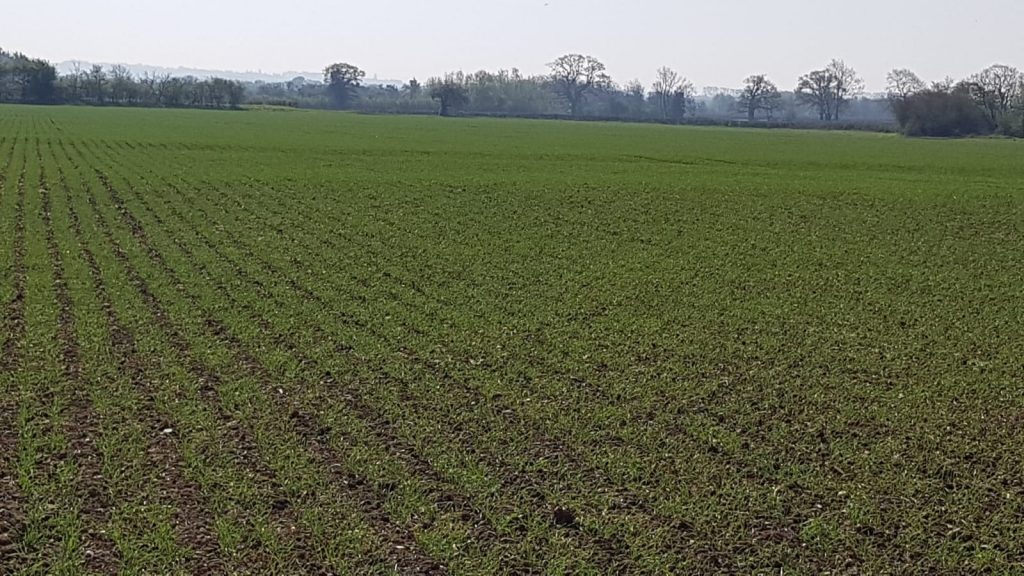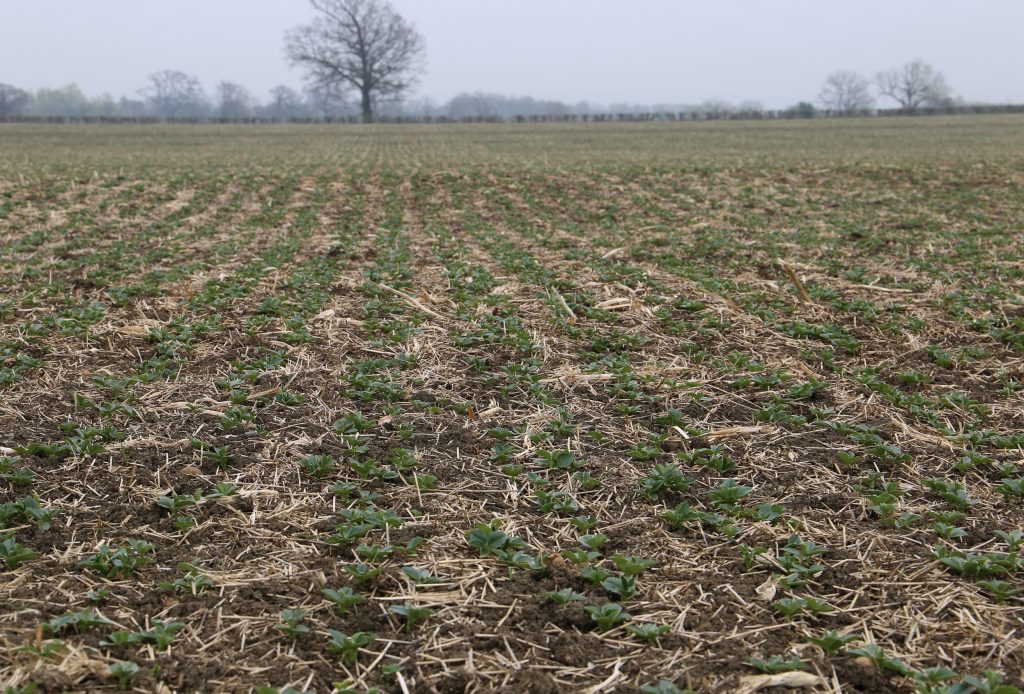During April our Winter Wheat has received its third dose of Nitrogen, ahead of the rain and its T1 fungicide. Our T1 this year comprised of Bugle, Opus Team and Alternil Excel, along with a PGR top up.
Something different for this year is our investigation into bio stimulants. We’ve been looking more closely at these and their effect on the different varieties of our Hybrid Wheat plots. The bio stimulant of choice is Calibra Carbo, available from Arysta. As a cocktail of vegetable amino acids and seaweed filtrate it is said to improve rooting and boost protein synthesis.
Across our 10ha trial field there are several different seed rates and hybrid varieties in 24m plots between the tramlines. To make a side by side visual comparison we went in with the bio stimulant across half of each plot, leaving the other half untreated. I am intrigued to monitor the plots as the season progresses and see if there is any noticeable change, especially if we are to see a repeat of the hot, dry conditions of last year.

Graham Winter Wheat on the far side of our farm on some of our heaviest ground
I’ve been really pleased with the Spring Wheat since it was first up and out of the ground swiftly. During April, with all its NPK and S applied and a steady rainfall, it has really thrived.
Ahead of sowing we achieved a healthy flush of weeds which meant we had great control pre-drilling. Along with the PicoPro which is being aided by rainfall, the seedbed is keeping very clean.
The signs are all there for a promising crop of Cochise. With excellent early vigour the crop is now tillering remarkably well, and I am pleased that we have returned back to this previously forgotten Spring Crop.

Spring Wheat drilled with the double shoot coulter, up and even across the field
On the OSR front, April has been an eventful month. With a run of frosts in the second week and storm Hannah, which brought sharp hail showers to the farm causing limited damage, the crop has certainly had its fair share of less than ideal weather fronts to deal with.
Despite this, the crop has benefited from a long flowering period in often warm, dry conditions and we’re now seeing a pleasing pod set going forward. The crop, drilled on wide 66cm row spacings with the Pro-Til, has looked well throughout the season due to its even and quick establishment. It got up and away (ahead of the neighbours!) and is showing plenty of branching lower down the plant which I hope will give it good potential come harvest.
Towards the middle of April, I applied the final fungicide with Pictor for Sclerotinia which is quite possibly our last pass through the crop before the combine. We don’t desiccate our crops as we find they ripen much quicker and more evenly when left well alone, something that I have put down to over the years as a result of the improved soil structure from reducing our cultivations.

There is no shortage of pods on our OSR this year, great potential for a bountiful harvest
Another Spring crop that hasn’t graced our farm for a while is the Spring Beans. With an excellent establishment that was bolstered by good seedbed moisture, they are coming along well.
Sown in February, the Beans made significant growth during the record Easter temperatures with a very good population, if not too good! I was concerned about the highly variable derogation seed but despite its official 70% germination, plant counts that have followed have shown that a higher percentage was actually viable, regardless of their disappointing appearance on delivery!
Bean weevil has been evident, but between rain and concerns over damage to our beneficial insects I opted against chemical control and favoured foliar micro nutrition to help keep the plant’s growth beyond the notching, which has been the right decision.

Beans are up and away in their double shoot rows, with a good - if not too good - population!
The 46.5mm of rainfall (every fraction counts!) received in April, was very welcome and brought our year-to-date total rainfall figure to 108mm. It is no lie that this is significantly below where we would normally expect to be at this time of the year, but with most of our Nitrogen now applied and washed in and with good rooting structures in place, we are as well set as we could hope to be.
The beauty of our strip tillage system, made possible with our trusty Mzuri Pro-Til 3T, is that valuable moisture isn’t lost at drilling. With no heavy cultivations to release this precious commodity it is instead preserved in the bank for times of need – call it a ‘rainy day’ fund if you will! Protecting this soil reserve extends the crop’s ability to withstand unusually low rainfall, like what we’re experiencing now.
To a degree, it could be said that in these circumstances our heavy soils are a blessing, but I have seen countless examples of where growers on light soils have equally improved the ability to retain moisture by increasing organic matter and improving structure through adopting strip tillage techniques, thus nurturing a soil better equipped to support crops in dry seasons.